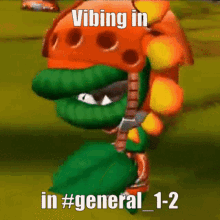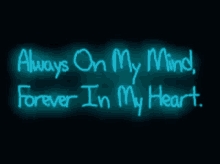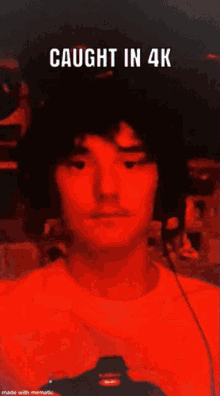Girls dpzz



- My amateur attempt at a few galaxies!




- 7 days continuously capturing data, in my bortle class 6 skies. I was extremly amazed, when i saw result of nearly 19 hours of exporsure. I didnt even thought it would be possible with my inexpensive setup. I really love it and I wanted to share it with you :)

♡



- Barred spiral galaxy NGC7479

Who really cares Kai and Cole

ثِيـم هِينـاتا🚕🌱🍣.


- Cosmos




- Our Amazing Universe

preciso desse... Boneco!!



- ITAP of a Dying Star

COLE BROOKSTONE



Andromeda aka M31, our nearest galactic neighbor at a mere 2.5 million light years away. Above it, M110 a dwarf, satellite galaxy of Andromeda. If you swipe you’ll see a less cropped version of my image that actually shows two other galaxies! Look to the upper left corner for two little pinkish smudges stacked on one another; C17 and C18 both dwarf spheroidal galaxies 2.58 and 2.08 mil LY away. Pretty neat. If I’m not mistaken Andromeda is the farthest thing from Earth that we can see with our naked eye. . Two weeks ago I knew nothing about what astrophotography really was or meant. I knew I loved the sky and space and everything it had to offer. I knew that every opportunity I had to shoot the night sky and/or the Milky Way I’d gladly take. I knew how to use a DSLR. Everything else that lead me to this photo I sought out and with the aid of the internet, taught myself. 🥵 Needles to say, I’m deeply inspired and kind of sleepy. . I know compared to “real” deep space Astro photos this is not much but I’m pretty proud of it (if you know me you know it takes a lot for me to admit any sort of pride ever 😂). Accomplishing this image took a lot of work, time, research, and trial and error. I still cannot believe my camera and 85mm lens are capable of such a result! . I have to give two big huge shout outs to Nico @nebulaphotosdotcom and Aaron @a.v.astronomy for making some really wonderful videos that a newb like me found incredibly helpful! Stepping into this world is INTIMIDATING. I foolishly thought since I have more than 15 years photography experience under my belt I’d have a leg up... I was wrong. This is another world. A whole other language. This is science and math and so much more. I’m hooked. . This image is the result of combining more than 600 signal frames shot at 2 sec each. All the frames are registered and stacked on the computer and then put together to form one singular file. After that it was post processed using good old photoshop. . Untracked Shot on my Canon 6D with just a tripod and intervalometer 85mm f1.8 Apx 20 min total exposure time Shot in a Bortle 5.5 zone (aka not very dark skies) - @andrea.fairservice on Instagram




- Andromeda taken from my back yard in Phoenix, AZ.


emmyuh mirror selfie


- Astronomy


Beige aesthetic, fiori, ombra fiori


- The Deer Lick Group (NGC 7331 and friends) HaLRGB

˓𓄹 ࣪˖ ˖ ࣪ ִֶָ ⸰ 𖥔 ͙ࣳ ⸰ֺ⭑



- Andromeda and its Third (!) sattelite galaxy (top left)




- Dumbbell Nebula - Messier 27. Scope: Celestron Omni XLT 150 Mount: EQ6R Camera: ZWO ASI 224MC

mine3

♡


- My shot of the Andromeda Galaxy (M31) from a few nights ago [OC][3052x2032]

PILBY!!



- Author M. J. Stoddard Bio




- The Leo Triplet – M65, M66, and NGC 3628


Ribbed Faux Layered Halter Neck Cropped Sports Top - Green / XL


- Enjoying galaxy season - The Leo Triplet with a DSLR


Luxury Real Estate Agents Headshots


- M101: Pinwheel Galaxy

Embrace Your Inner Emo with These Profile Picture Ideas 🖤✨ #Emopfp #Anime | Social Media Pfp


- Running Man Nebula through my Telescope [2697x2655] [OC]


- The Great Orion & Horsehead Nebula


- astronomy


- NGC 4565, an edge-on spiral galaxy [OC]


- The Cartwheel Galaxy @ 2800mm


- The Great Orion & Horsehead Nebula


- On this Thanksgiving, I am thankful for all the Universe has to offer


- You can still have large gatherings in Coma Berenices


- My most ambitious project to date- being the first amateur to ever image the faintest jet being ejected from the galaxy Centaurus A [OC]


- I nearly froze solid trying to image this nebula


- My image of the Andromeda Galaxy (M31).


- Barred Spiral Galaxy IC5092 [OC] [1279x951]


- sorry kid


- The further you look , the further you look back in time . This image below is 30 million light years away from us . So when you look up, remember you arent seeing things as they are now; youre seeing things as they were. WTF


- Before and after processing of the Horsehead nebula!


- The Cave Nebula


- M27 in HαLRGB - 17hr of integration time.


#Repost @mc_astrofotografia (@get_repost) ・・・ Tripletto del Leone 36x5 minutes at 1600 ISO, 15 dark, 21 bias, 21 flat Canon EOS 550D Full Spectrum with Baader UV/IR-CUT, SkyWatcher Newton 130/650 PDS, SkyWatcher EQ6 PRO; guide with SharpGuide 60 and ZWO ASI120MC. - @astrotest_community on Instagram


- A cute galactic couple holds hands in the vast emptiness of space. Zoom in to see more. Taken with an amateur telescope and 13.5 hours of exposure. [OC]


- A picture of the Cocoon Nebula that I took from my back yard


- God of all Gods


- This is M74, the galaxy with the most perfect spiral known


- Andromeda Galaxy from my backyard [Massachusetts]


- Galaxies, galaxies, galaxies [3120x2148][OS][OC]


- NGC7023 The Iris Nebula


- M51 Whirlpool Galaxy


- I shot this some time ago. Ive been toying with it ever since


- M51 - The Whirlpool Galaxy [OC]


- M57 Ring Nebula with 5080mm focal length experiment [OC]


- My 22 hour exposure of M81 and M82 revealing the surrounding dust


- Using amateur equipment I photographed Centaurus A galaxy from my backyard in the city.


- Pinwheel Galaxy through my telescope last weekend.


- Triangulum Galaxy [OC][2503x1627]


- Stayed up all night to shoot this galaxy, and its the weirdest looking one Ive ever done


- Spiral Galaxy M74 [4446 x 3066]


- NGC 4236 - Barred Spiral Galaxy in Draco [OC]


- Outta space, man!


- My 5 hour exposure of the Sculptor Galaxy from my backyard


This image features the color image of the comet C/2020 F3 NEOWISE taken by Hubble on 8 August 2020 within the frame of a ground-based image of the comet that was taken from the Northern Hemisphere on 18 July 2020. Hubbles image of the comet shows a portion of the comet’s coma, the fuzzy glow, which measures about 18,000 kilometers across in this image. Credit: @NASA, @europeanspaceagency , Q. Zhang (California Institute of Technology), A. Pagan (STScI), and Z. Levay Tags: #astronomy #space #astrophotography #universe #nasa #science #moon #cosmos #stars #galaxy #astrophysics #nightsky #photography #physics #milkyway #astro #cosmology #earth #spacex #sky #astronomia #nature #telescope #astronaut #solarsystem #nightphotography #night #astrology #astrophoto #elonmusk - @cosmosingly on Instagram


- ISS captured through my Telescope [1000x1000] [OC]


- Pinwheel galaxy (M101) - this is a reprocess, I dont know if its allowed here, so delete it if not. I reprocessed because of the many comments about the previous image which was processed a year a go when I just started. Captured with 11 inch


- Andromeda, our nearest galactic neighbour [OC]


- Messier 51 with The Discovery Channel Telescope


- The Fornax Cluster of Galaxies - European Southern Observatory [4000 x 2796]


- M33: Triangulum [3906 x 2612, OC]


- You wont run out of ⓒⓞⓛⓞⓡ now


- I was able to capture one last picture before we lost all our darkness for the summer here in Alaska. M51, The Whirlpool Galaxy, DSLR


- Andromeda- Sacramento


- [OC] The Orion Nebula. My first time shooting on a telescope.


- NGC7331 unbarred spiral in Pegasus


- Managed to capture M51 from my campus observatory


- In the backyard from Dallas Texas, I somehow managed to capture this galaxy 27 million light years from Earth


- Parker Solar Probes WISPR photo of C/2020F3 NEOWISE, and the approximate position of the probe at the time it was taken


- Took this picture of the Dumbbell Nebula from my backyard in Phoenix, AZ


- Trying a new style!


- The Helix Nebula - 4 Hours


- my view of M51 the Whirlpool Galaxy in Canes Venetici.


- 1 Trillion stars, Pinwheel Galaxy also known as M101 [OC]


- This Hubble image captures the beautiful spiral galaxy NGC 5861, located about 85 million light-years away in the constellation Libra. The galaxy has hosted two known supernovae, one discovered in 1971 and the other in 2017


- My second attempt at M27.


- Where is the Sun?


- Star & Crossbones Nebula [OC] 27 hour exposure


- Grus Quartet 60 Million Light-years from earth. This is the deepest photo into deep space that I have taken so far. 2.5hrs of Data under smoky skies from the Australian bush fires.


- I used a backyard telescope to collect light from deep space for over 18 hours, revealing this beautiful pair of galaxies [OC]


- Andromeda and Triangulum galaxies through my Nikon D3300, 50 mm lense.


- [OC] NEOWISE taken in the UK using my phone camera (and a small telescope)


- My attempt at capturing another galaxy


- M81 – Bodes Nebula


- The Hercules Globular Cluster – Messier 13


- NGC 6814 [1280x1280]


- M101 - The Pinwheel Galaxy


- Arp 104 Keenans system


- The Whale Galaxy and the Hockey Stick Galaxy


- Black Holes in Space


- The distance to the planetary system at TRAPPIST-1 is 40 light years - less than half a pixel in this picture (square magnified to show pixel size)


- Helix Nebula with a lot more data


- The Whirlpool Galaxy


- Sharpest view ever of dusty disc around aging star


- Fireworks Galaxy (NGC 6946) Ha+LRGB


- The Needle Galaxy (NGC4565)


- Astronomy & Space


- I stayed up until 4 am to take this 15 minute exposure of the Horsehead and Flame Nebula (IC 434)


- The Sunflower Galaxy, shot last night!

- M57 - the Ring Nebula in Lyra

- Sketch of comet 21P/Giacobini with my 350 self made dob.

- The reddit was right, there was an issue with my sequator which told me 4× bigger exporsure than real one. I used DSS for first time, and it really is only 7 hours, but still looks kind of dope. Fake colour tho, becaus I didnt fing lightpollution tool in DSS. Im sad a little sad, but still proud.

- Messier81, 82 Bode and Cigar

- A minimalistic gaming wallpaper I made

- The Triangulum Galaxy

- So I was browsing the new Hubble XDF image when...

- With home equipment and under severely light polluted Detroit skies, I still managed to capture this galaxy 30 million light years from Earth.

- I drove out to the desert this weekend and took a picture of the great cluster in Hercules with my telescope

- Playing with my new equipment, managed to capture this galaxy

- M51 - The whirlpool galaxy [OC]

- NGC 247 LRGB

- Black Hole concept with Plasma jet an Accretion disk [NASA/JPL-Caltech]

- Pinwheel Galaxy

- Andromeda Galaxy captured from the Swiss Alps

- M31, Andromeda galaxy

- Ark

- Same but different. Spiral galaxies NGC6935 & NGC6937

- Located about 35 million light years away is a small group of galaxies called the Leo Triplet. Using my telescope, I was able to get a picture of the distant trio and many other background galaxies.

- My image of two galaxies colliding with each other, maybe one day the Milky Way and Andromeda will look like this [OC]

- A 12-year-old astrophotographer borrowed some of my gear and took this shot of the whirpool galaxy [OC]

- This Orion photo was photographed using a $50 vintage lens with 7hrs of exposure.

- I spent 3 days photographing andromeda from my light polluted backyard. Its total of 7 hour exposure, half of photos were deleted because of my startracker(I have star adventurer pro and redcat 51 under wich is ballhead. I think its too heavy for it) Its my first astrophoto I am proud of.

- Orions Belt from the Backyard [5925x3928] [OC]

Chapter 16 : M27, 𝗧𝗛𝗘 𝗗𝗨𝗠𝗕𝗕𝗘𝗟𝗟 𝗡𝗘𝗕𝗨𝗟𝗔 ! Discovered in 1764 by Charles Messier, the Dumbbell Nebula is a planetary nebula which located in the constellation Vulpecula. It was also the first ever planetary nebula to be observed in the history of astronomy. The particular shape which is compared to to that of a dumbbell has earned this nebula the name that we know nowaday. At its brightness of visual magnitude 7.5, which makes it easily be seen in binoculars, even smaller telescopes can observe some of its details. Thats why M27 is a popular object among amateur astronomers. The nebula, at the end of its life, has shed its outer layers in a glowing display of color. The hot central star, consists of gas that has been ejected. They are heated by the intense ultraviolet radiation from this star and emit strongly at specific wavelengths. Consequently, these wavelengths then correspond to different atoms existing within the nebula, thus to the different colors that we can see. If you find it amazing, please like our photo for more interesting content ! Photo captured through a Perl 200/1000 telescope and a Canon 700D, 1’30s (x160) or 4 hours of total exposure, ISO 800, 40 DOF. 6/22/20. • • • • • • #m27 #dumbbellnebula #nebuleusedelhaltère #naineblanche #milkyway #blackhole #solarsystem #voielactée #trounoir #astronomy #astronomie #astrophotography #astrophotographie #galaxy #galaxies #universe #univers #cosmos #star #spiralgalaxy #canon #canonphotography #night #milkywayphotography #francesky #cieldefrance astro #liftoffwithtala #astronomiefrance - @astronomien_ on Instagram

- NGC 3486, an intermediate barred spiral galaxy located about 27.4 million light-years away from earth in the constellation of Leo Minor. The black hole at its center is thought to be less than a million times the mass of the sun, which is really, really small (image credit:Adam Block)

- I borrowed a big telescope in the desert to try and get the most detailed picture of a distant galaxy possible with amateur gear. Here is my result. [OC]

- Hubble probes Milky Way Hub

- Thank you GrandFather Vector

- NGC 5033 with a 8 SCT Canon 60D

- I photographed the M106 galaxy that is nearly 25 million light-years away from my driveway under light polluted skies of Pittsburgh, PA with 14 inch telescope [OC]

- I photographed The Leo Triplet

- The Helix Eye of God Nebula (NGC 7293) - 13 hours

- M101 - The Pinwheel Galaxy [OC]

- M81 and M82

- Took my telescope to the beach and imaged some galaxies in Ursa Major.

- M51 Whirlpool Widefield [OC]

- A picture of the Andromeda Galaxy that I took a few weeks ago. Hope you guys enjoy the view!

- cosmos

M88 was discovered by Charles Messier in 1781 and can be observed with binoculars under clear viewing conditions. These images by Adam Block (@adamblock64) were taken earlier in the year with our 32in Schulman telescope. Images like these are only possible with good telescopes, great photographers, dark skies, and access to observatories like the Mount Lemmon SkyCenter. 🌌🪐🔭 #astrophotography #galaxy #messierobjects #MLSC #SkyCenter #mountlemmon #mtlemmon #remoteastrophotography #tucson #Arizona #DarkSkies #KeepLookingUp #Astronomy #space #astronomyoutreach - @uazskycenter on Instagram

- M63 - The Sunflower Galaxy

- 53h exposure of M106. Zoom in, there are over 100 galaxies in this image!

- Spiral Galaxy NGC6902 and Friends [OC] [1518x974]

- 2700 miles to create this image, was totally worth it.

- M57-The Ring Nebula In HaOiiiLRGB-Original poster on r/astrophotography by u/azzkicker7283

- This is my image of the Black Eye Galaxy - Taken last Wednesday [OC]

- My first ever deep space object with a Schmidt cassegrain telescope.

- NGC 6962 and other fuzzies

- Real picture of a galaxy containing billions of stars

- 26 hours of exposure on the Hidden Galaxy - a galaxy obscured by the dust from the Milky Way

- M51 - The Whirlpool Galaxy

- The Leo Triplet: A group of galaxies 35 million light-years away [3155 × 1876] [OS]

- Why is no one paying attention to the better version of the Black hole image?

- A supermassive black hole in action

- The Cone Nebula From Hubble

- The clouds rolled in, but Im glad I still kept shooting

Galaxies come in a wide variety of shapes and sizes. Perhaps the most famous are the spiral galaxies. Our own Milky Way is a spiral galaxy, along with nearly all other galaxies within our galactic vicinity, including Andromeda. The structures of these galaxies are truly awe inspiring. The complex spiral is one of nature’s most beautiful creations. All you need is time and physics, along with a lot of stars. All of the material in a spiral galaxies orbits around the galactic centre. It was once assumed that the spiral shape was created because stars closer to the galactic centre orbit faster than those further out. This turned out not to be the case, although something similar was happening. Rather than differences in stellar velocity being the cause, it turns out that the spiral arms themselves rotate at varying speeds. When material is exchanged between spiral arms, such as fast moving material moving into a slow moving arm, it hits a kind of wall and begins slowing down. This can compress stellar material, leading to a wave of star formation. Stars are denser than gas clouds, and thus move slower than the surrounding material. Over time, stellar material moves ahead of the stars and compresses, forming more stars and continuing the process. These differences in velocity and exchanges of material create and maintain the spiral structures of these magnificent galaxies. Image credit: NASA/ESA, Hubble #science #physics #astronomy #astrophysics #nasa #hubble #telescope #cosmos #universe #space #esa #nature #knowledge #discover #explore - @astrophysics_ on Instagram

- Fine Ring Nebula [1348x1114] [OC]

- Andromeda is 6x bigger in the sky than the moon. Heres Andromedas actual size if it was brighter.

- From sky

- Andromeda galaxy

- Sculptor Galaxy. This photo was taken from the middle of my city in New Zealand.

- Using only 85 minutes off data, I was able to make my best photo of the Triangulum Galaxy to date! [OC]

- A star violently exploded 8,000 years ago. I decided to image its remains.

- Tragic not in public

- Spiral Galaxy IC4351 [OC]

- Hubble image of Hoags object — a galaxy within a galaxy within a galaxy (and nobody knows why)

- Supernova in M61

- Beautiful spiral galaxy 65 million light years away [3493x3536]

- M81 and M82

These three galaxies illustrate different types, even though they are close together in space. On the left, NGC 5981 is a spiral with a bar across the center, same as our home galaxy. In the middle, NGC 5982 is an elliptical, a featureless cotton ball of stars. On the right, NGC 5985 is a classic spiral with well-defined arms. The light from these three left on its journey to my Canon camera back when birds first appeared on Earth and Pangaea began to split up into continents. 150 million years ago! These galaxies are blasting away from us at 1500 miles per SECOND. #astro #astronomy #astronomia #astrophotography #astrophotos #APOD #cosmos #galaxy #galaxies #Hubble #longexposure #milkyway #nasa #nightsky #nightimages #nightscape #nightphotography #sky #space #stars #telescope #universe - @astropicsdaily on Instagram

- I did it reddit, landed on Ike! i think im gonna go to jools moons next

- The Whirlpool Galaxy from my backyard [OC]

- M51 - Whirlpool Galaxy - From my driveway telescope

- heres my odd looking image through my 8 inch

- The Pleiades open cluster - M45

- My Improvement After Two Years of Astrophotography

- astronomy

- 12 hours on the Whirlpool Galaxy

- Triangulum Galaxy M33 - First attempt with P&S Bridge Camera

- I photographed a galaxy 13 million light-years away with a 620 lb telescope.

- It may not look like much but here is my attempt at photographing a few galaxies!

- M101 [952X595]

- 12 hours of exposure on the Whirlpool Galaxy through a 12 scope showing faint dust throughout space

- Galactic Trio Arp 286

- M106, NGC 4217, NGC 4248, and more

- First attempt at a planetary nebula: Helix Nebula (NGC7293)

- Asteroids and comets

- As a 16 year old, I am finally able to take images like this. M31 - The Andromeda galaxy.

- ITAP m33 Galaxy

- I used two different scopes and over 50 hours of exposure to reveal hundreds of galaxies in a small region of the sky in true color [OC]

- 26hr exposure of the Southern Pinwheel Galaxy using a 24 inch beast of a telescope, photographed from Chile

The Milky Way Core and Rho Ophiuchi Cloud Complex. This is a cropped image, the originals were shot on a 25mm zeiss batis. Used some new actions in photoshop for this one, I’ve been messing around with my milky way editing flow lately so hopefully the star reduction isn’t too much! This image is stacked and calibrated with dark and bias frames in deep sky stacker. All photos taken on Sony a7rii / zeiss batis 25mm f2 / iso 1600, f2 Tracked on @msm_rotator 10 x 120” Tripod @3leggedthing Total integration time = 90 minutes Hope you enjoy!! - @bclimbss on Instagram

- M106 shot with a DSLR

- Triangulum Galaxy - Messier 33 (My 3rd DSO picture)

- Bodes and Cigar Galaxy [OC]

- M51 (Whirlpool galaxy) First time processing and taking a photo of a deep-sky object

- ITAP of a Space Sombrero

NGC 7331 et stephans quintet Canon 1100D 6h30 de pose (poses de 3min) 100 darks 200 bias 41 flats Après un assez long moment sans shooter de galaxies je fais directement celles-ci. Jai adoré faire cette photo car elles sont vraiment sympa😁🌌👍 #astrophotographie #astro_taner #astronogeek #astronomy #astrophotography #highpointscientific #deepskyphotography #ngcobject #ngc #messier #cielprofond #deepsky #deepskyobject #galaxie #galaxy #canon #sky #photography #photographie #nature #skywatcher #canonphotography #nasa #esa #hubble #telescope - @astro_cp on Instagram

- I captured The Pinwheel Galaxy-M101

- On Jan 2 2014, I took this shot. Exactly one year later, I reprocessed it with everything Ive learned

- Trifid and Lagoon... still learning

- NGC 4993, an otherwise unexciting elliptical galaxy, host to the first ever neutron star merger event.

- M82 And M82 - 11 million light years from Earth [OC]

Grouper ‘A I A : Alien Observer’ [KRANK 224] - @krankyltd on Instagram

- Andromeda Galaxy Ha+LRGB

Vous avez probablement déjà vu cette nébuleuse : La nébuleuse de la tête de cheval, cest un nuage de poussière obscur qui cache un autre nuage lui même illuminé par lhydrogène qui le compose. Cette photo a été prise en mars avec mon télescope mais en ce moment je reprends les cours loin de mon observatoire ... #astronomie #tiktok #skywatcher #telescope #canonphotography - @damienastrovideos on Instagram

Congratulations Martin Pugh on your APOD! He captured this beautiful view of Arp 227 with a PlaneWave CDK17. #planewaveinstruments #telescopes #deepsky #nightsky #ig_nightphotography #astrophotography #universetoday #nightscape #milkywaygalaxy #stargazing #pixinsight #longexposure_shots #astrophoto #nightimages #milkywaychasers #nightshooters #natgeospace #ig_astrophotography #science #messier #nightphotography #astronomy #weownthenight #space #amazing_longexpo #longexposure_shots #longexpoelite #longexposure #night_excl #yourshotphotographer - @planewaveinstruments on Instagram

- Southern Spiral Galaxy NGC 289 [OC]

- I n f i n i t e s o u r c E

- MACS2129-1 compared with the Milky Way [2048×1536]

- M81 - Bodes Galaxy - From my driveway, through my telescope.

NGC 4725 Canon 1100D défiltré 6h de pose 49 darks 118 bias 23 flats Un traitement qui mas pris plusieurs jours pour obtenir un résultat correct mais une (voir plusieurs) galaxie(s) vraiment splendide(s)😁🌌 #astrophotographie #astro_taner #astronomie #astrophotography #galaxie #galaxy #deepsky #cielprofond #deepskyphotography #astronomy #astronomy #highpointscientific #deepskyobject #ngcobject #stars - @astro_cp on Instagram

- A Backyard Andromeda Galaxy.

- Please do not buy. Our sales have gravitated too many beings.

- NGC6888 (Crescent Nebula)

- NGC-7331 I took with my DSLR

- Messier 101 (Spitzer, Hubble and Chandra) [7200 x 7200]

- The Whirlpool Galaxy 23 Million Light Years Away From Earth [OC]

- Tried my hand at capturing M101 on Friday

- M81 Reprocessed

- ITAP of Orion nebula with my budget astrophotography setup - 56x52s f/3.5 @200mm at -30°C, so no cooling required

- What will survive this battle of the galaxies? Known as Seyferts Sextet, this intriguing group of galaxies lies in the head portion of the split constellation of the Snake. [1496x1479]

- M101 The Pinwheel Galaxy 21 million light years away

- M74 - Face-on Spiral Galaxy in Pisces

- M51 The whirlpool galaxy captured, 5.2 hrs stacked

- A friend and I from across the world worked together to capture an image of a close galaxy to Earth, This is the result of 13hrs exposure.

- The Whirlpool Galaxy from my backyard

- Deer Lick and Stephans Quintet

- GN-z11, the oldest, most distant galaxy found [2048×1536]

- Supernova 2020jfo in M61 [OC]

Some products are made... some are reborn. egg2 - Coming Soon . Click the link in our bio to pre-order from your local retailer #shoplocal - @eggstrolleruk on Instagram

- I captured the The Pinwheel Galaxy-M101 [OC]

- [OC] Messier 94 - The Cats Eye Galaxy taken from my backyard

Astrobin foto van de dag: NGC 3628 and a Stream of Stars. Fotoinfo: https://www.astrobin.com/yekiwm/C/ Copyright: kvwood #astronomie #sterrenkunde #sterrenkijken #astrofotografie #astrobin #astronomie #astronomy #sterrenkunde #stargazing #astrophotography #space #universe #astrobin #astronomia #astrophysics #stargazing #astrophotography #space #universe #stars #planets #nebula #telescope #astrophotographer #nature #science #nightsky #cosmos #astrophoto #nasa #nightphotography #starrynight #astrofotografie #photo #photography - @astrolandnl on Instagram

- Photo of Comet Lovejoy ( C/2014 Q2 ) taken on 21/12/2014 by Gerald Rhemann.

- M31: 1st for me 3 min Subs, No Guiding, Significant Light Pollution

- M51- The whirlpool Galaxy

- Messier 106 (Dragonfly Telescope data, processed by me)

- The Whirlpool Galaxy

- Orion nebula

- Bode’s Galaxy (M81)

- Space Posters

- SN 2020jfo in M61

The Andromeda galaxy spans approximately 220,000 light years in its diameter. Thus, a total of 220,000 time years are displayed within this photograph. Thusover, through our ocular receptors, we can observe 220,000 years of photonic life... in an instant. How you may ask? #TimeAndSpaceIsAnIllusion - @tonyjarone on Instagram

- The Triangulum Galaxy [OC]

- avoidle at ALL costle

- My first attempt at M81+M82

- How the Triangulum Galaxy looks to my camera

- M51-The Whirlpool Galaxy - 23 million light years from Earth - 4 hours of exposure

- This was smaller than Id hoped...A little picture of a big galaxy?

- Not quite twins Brett Kozma from Hesperia, Michigan Bode’s Galaxy (M81) and the Cigar Galaxy (M82) float through space in the constellation Ursa Major the Great Bear. M82 is classified as a starburst galaxy, one in which a high level of star formation is happening.

- 22 hours of exposure on Bodes Galaxy and the Cigar Galaxy revealing faint surrounding dust

- A simple galaxy picture shows the power of digital photography: a quasar at the edge of the universe

- The Black Cloud (Barnard 68) [800x869]

- The Andromeda Galaxy

- Here is a lousy, light polluted, picture I took of the Andromeda Galaxy. My first!

- Spiral Galaxy NGC 3370 [6746 x 6746]

- In honor of Halloween season, heres a pic of the Witch Head Nebula

- 24 hours of exposure (zoom in to see)

- Space and Astronomy

- Cosmosapiens

- The Ghost Nebula (Sh2-136)

vvvv - @viceversaonwax on Instagram

- The Andromeda Galaxy

- Owl Nebula and a Thousand Galaxies

- Astronomy II

- M27 - Dumbbell Nebula

- I used a four-inch refractor to create this image of the Outer Limits Galaxy (NGC 891), which is located 30 million light years away. If you look closely, almost 100 other galaxies are visible in this image.

- Planetary Science

- GALAXY Space Art with two Deep Sky Images taken through my Telescope (Composition) [OC]

- When disaster strikes

- eir words and actions continue to be very hostile and d

- A perfect textbook spiral galaxy from the top

- Using a 0.6-meter telescope, I photographed a Supernova in the Messier 61 Galaxy from Chile.

The Leo Triplet would then be ready...in color. ;) In the constellation Leo there are 3 quite big and known galaxies, which seem to lie directly on a heap. I have photographed the triplet every year since I started my hobby of astrophotography. This year I achieved my best result. Who knows, maybe next year Ill be on it again. :) . Recorded on GSO 150/750 Newton. Camera was the Asi 1600mmc. . Total exposure time: about 23 hours . . . . . . . . #nebula #Galaxy #Leo_triplet #space #skywatcher #astrophotography #astronomy #cosmos#nightsky #deepsky #space #beautiful #amazing #telescope #sky #Stars #galaxy #longexposure #astro #astronomer #deepsky #deepspace #cosmos #nightsky #night_shooterz #space #universe #universetoday #space_and_earth_photography #flöha - @space_from_earth_photography on Instagram

- Planetary Science

- M81 & M82

- Exoplanets: KELT-16 b, HAT-P-49 b, Qatar-3 b

- My first attempt at M51-the Whirlpool Galaxy

- Galaxies colliding

- I really underestimated comets!

- Bodes Galaxy

Bodes and the Cigar galaxy (M81/M82) in Ursa Major, is pretty much the only half decent galaxy image I’ve got this spin around. Still wide-field, but I do have a longer focal length scope coming my way soon... so, next time, gadget! • Actually that sounds well random... is Inspector Gadget just a British thing? Actually there was that film with the bloke that played Ferris Bueller in it... I’m guessing that was an international thing? Anyhoo... if you remember the 80’s cartoon, stick a thumbs up below 🤘 - @night.sky.nick on Instagram

- Barred Spiral Galaxy M109 [1708x1272][OS][OC]

- Pretty excited about my first Galaxy shot in a long time. Messier 33 also known as the Triangulum Galaxy.

- My image of the Sculptor Galaxy - one of the brightest galaxies in the night sky!

- This is probably a piece of shit, but... invest?

- The Leo Triplet of Galaxies

- Edge on Spiral Galaxy NGC 5170 [OC]

- Arp93 Colliding Galaxies NGC7284 NGC7285 [OC]

🌌🔭La Galassia di 𝐀𝐧𝐝𝐫𝐨𝐦𝐞𝐝𝐚 è una galassia a spirale gigante che dista circa 2,538 milioni di anni luce dalla Terra[4] in direzione della costellazione di Andromeda, da cui prende il nome. Si tratta della galassia di grandi dimensioni più vicina alla nostra, la Via Lattea; è visibile anche a occhio nudo ed è tra gli oggetti più lontani visibili senza lausilio di strumenti. La Galassia di Andromeda è la più grande del Gruppo Locale, un gruppo di galassie di cui fanno parte anche la Via Lattea e la Galassia del Triangolo, più circa cinquanta altre galassie minori, molte delle quali satelliti delle principali. Secondo studi pubblicati negli anni duemila, derivati dalle osservazioni del telescopio spaziale Spitzer, conterrebbe circa un bilione di stelle (mille miliardi), un numero di gran lunga superiore a quello della Via Lattea. Intorno ad Andromeda (M31) orbitano almeno 14 galassie nane. Una di queste è visibile in foto: M110. La Galassia di Andromeda è in avvicinamento alla Via Lattea alla velocità di circa 400.000 km/h pertanto molto probabilmente tra 5 miliardi di anni, la nostra Via Lattea si scontrerà contro Andromeda. Se ti è piaciuta la foto, condividila nelle stories ♥️😁 #sky #cielo #universo #universe #asi #agenziaspazialeitaliana #esa #agenziaspazialeeuropea #europeanspaceagency #nasa #apod #stelle #star #andromeda #nikon #focus #astrofotografia #astrophotography #astronomypictureoftheday #luce #light #notte #night #photooftheday #scienza #science #astronomia #astronomy #galassia #galaxy - @chrystyanfilice_photography on Instagram

Learn how to set up and use a telescope by signing up for our Live Stream -Observing the Night Sky- Telescope Help starting October 8th. This LIVE stream class will discuss the different types of telescopes, setting up and using a telescope, telescope accessories, observing aids, basic astro-photography and much more! Sign up now for this fee based class at http://ow.ly/OGE550B2CW3 - @buckeyeazrecreation on Instagram

- Hubble images

- The Whirlpool Galaxy, as seen by my camera

- Whirlpool Galaxy (M51) with my backyard telescope

Todo listo para observar la Luna en el día internacional de observar La Luna ! - @northoptics on Instagram

- Tail of Comet C/2020 F8 SWAN

- A deadly MIƧƬΛKΣ

- s c e n t t

